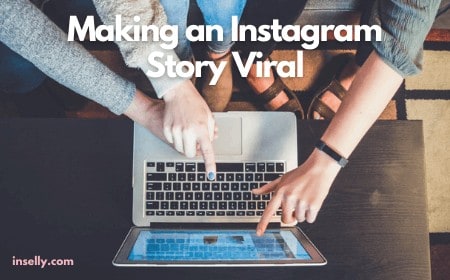Facebook is the first platform that springs to mind when discussing social media reach. It’s also the first site that comes to mind when discussing the decrease of organic reach on social media.
What about networks like Twitter and LinkedIn, where you can reach more people?
You can see it all over the place: organic reach is dropping. We’re going to look at why this is happening and what you can do about it.
Paying for social media promotion is not always feasible for small businesses. For others, it’s about finding the right balance between paid and organic reach.
These strategies will viral Instagram story, and you will get maximum engagement on your content.
When using social media, it’s important to learn about every element of it and to grasp how each platform’s algorithm works in order to get the most of it.
Activation of the algorithm is based on the rate of engagement it receives from users. A video will be shared more widely if, in one day, it gains 20 percent more likes. As a result of these triggers, users have noticed that their video views arrive in waves.
To help you define what it means to generate shareable content people would engage with, today’s 5 suggestions will open multiple platforms and help you distribute on your preferred channels.
1. Start by concentrating your efforts in the correct areas:
In general, most businesses believe that they must have a presence everywhere, from Facebook to Pinterest. This isn’t always the case, though!
It’s possible that your target demographic isn’t active on every social media network, so why spend time? It’s easier than you think to choose which network to focus on.
To assist you decide whether the platform is worth your time, here are some brief tips:
You only need to ask:
Asking your audience is the greatest method to acquire reliable information about them. Make use of a survey, an email, or even a short phone call to check how your top customers are doing. During this time, ask them which social media sites they utilize for professional and personal usage.
Take a look at your percentages:
As a blogger, you should already be using share buttons. The metrics provided by many of these platforms will show you who is sharing your material and where they are sharing it. Using these data, you can determine which platforms to spend your attention on.
You should also take the time to optimize your social media profiles:
A few paragraphs ago, I drew a parallel between social media algorithms and those employed by search engines like Google All types of on-page SEO strategies are used when we generate material for these engines.
We’ve now found out that social media works in a similar fashion.
For improved exposure and optimization, every component of your social media profile may be adjusted. As a social media superstar, you must be familiar with all of these aspects.
This is where you’ll find a lot of your preferred strategies:
- Easy-to-remember usernames are the most popular.
- A photo/brand logo that is easily identifiable.
- Descriptions include a lot of keywords.
- Backlinks that can be tracked back to your website
Utilize the same considerations while publishing, such as which photos to utilize, which keywords to add, and how to structure your call-to-action. Any and all social media channels are included in this.
3. Post information that is timeless:
Even on giants like Twitter or Facebook, a normal post can have a broad range of lifespans.
These posts must also be interesting. No matter what business you’re in, you can still make your postings stand out.
You should avoid publishing material with a time limit.
Consider resolving challenges that are prevalent and persistent in your business. It would be much wonderful if you could submit something both instructive and humorous. With evergreen content, you may target emotions like humor, shock, or awe.
4. It’s better to work intelligently than harder:
It’s estimated that the average Facebook user sees around 1,500 stories every day. Since the news stream only displays the most relevant 300 of these, it helps to improve interaction.
It’s clear now that publishing more won’t solve the problem.
The focus should be on posting high-quality, relevant material, not quantity. In this situation, quality trumps quantity in every way. This will improve organic reach more than bombarding your page with anything you can find.
Despite the fact that there’s no exact science to this, Buffer recommends posting twice a day.
5. Achieve a good balance between promotional and helpful material:
One of the hardest questions to answer, because you want to advertise your product or service on social media as soon as you can. This is not necessarily a self-serving endeavor.
It is expected that users will also be able to access valuable material on the site.
Content sharing (how-to guides, articles, fresh posts, etc.) increases user confidence in your business by providing them with useful information. Because they recognize you as an expert in your field, they’ll put their faith in your recommendations for a product or service.
The 80/20 rule is the one to master here. Most of your material should be valuable and informative; the remaining 20 percent should advertise your business or items. Once the 80% has been achieved, you’ll get new followers as well as trust, which will lead to them seeing the 20% and purchasing what you’re offering.
Don’t forget to add movies, pictures, and other interesting material types in this mix.
Final Words:
Organic social media reach has the same secret as good search engine rankings. Optimization, user experience, and high-quality content are the key factors. Consider your social media activities in the same light as your SEO efforts, and everything will fall into place.
Despite the fact that there’s no exact science to this, Buffer recommends posting twice a day. Do not be scared to experiment with different frequencies because your business is unique.


